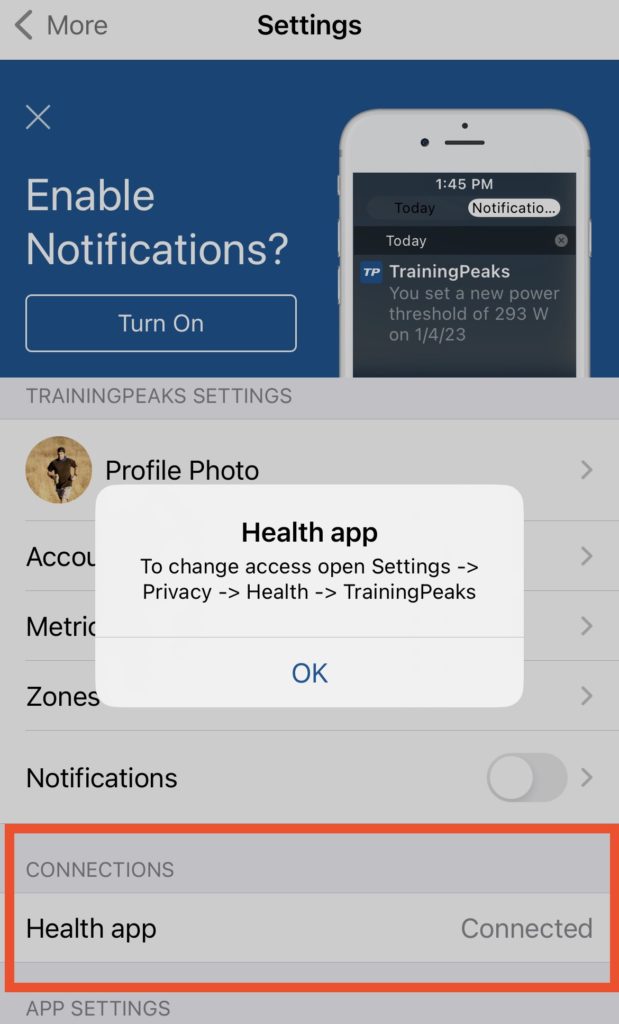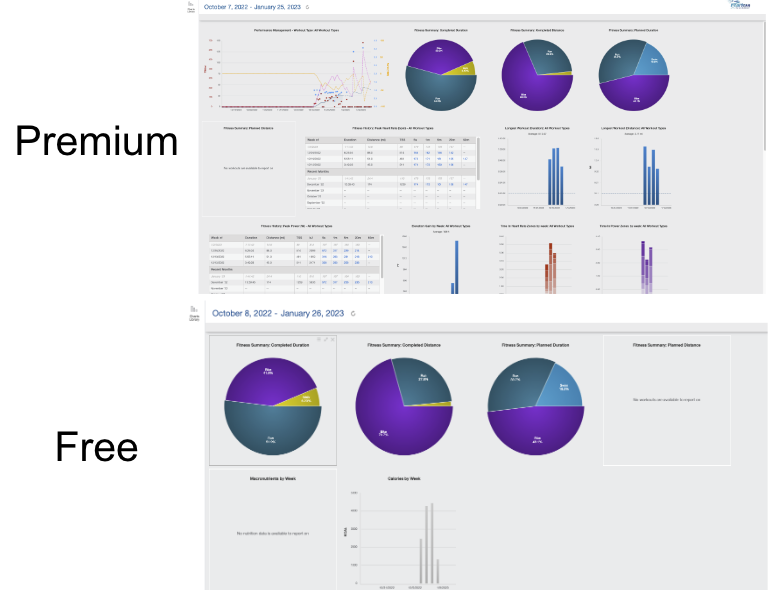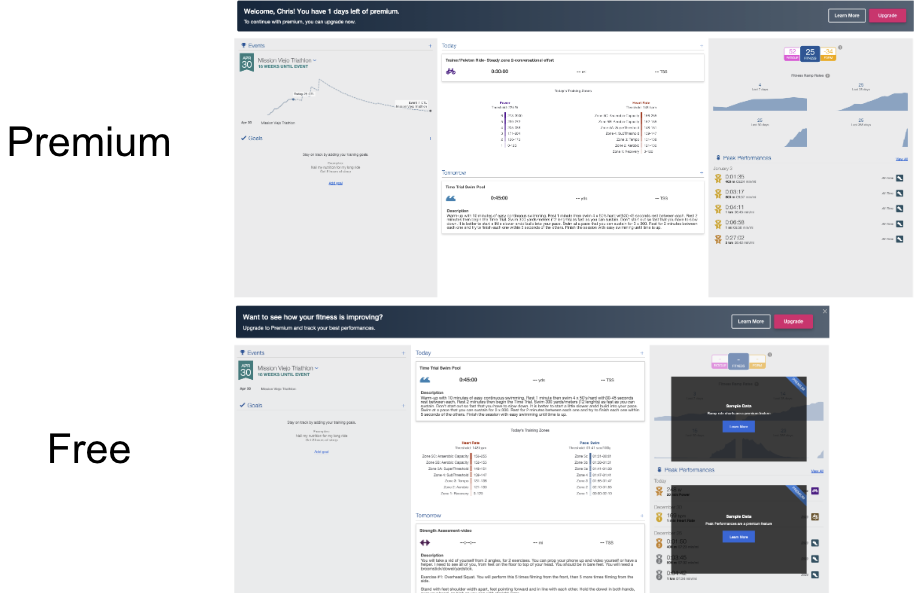Recently I decided to take training for a triathlon more seriously. This invoked hiring a triathlon coach and subsequently getting a proper training plan. To keep track of the plan, and how workouts were completed compared to the plan, my coach encouraged me to setup things with Training Peaks.
This article summarizes the experience of working with a coach primarily using training peaks. While my coach is listed in the Training Peaks coach directory, I found them through a friend and signed up independently through their primary coaching platform. Even so, my coach already had familiarity with the program and also has a coaching account – so I was not starting from zero.
Training Peaks and Apple Watch
Training Peaks by itself is not an activity tracker, it is an activity aggregator and manager. This means that to use it properly you still need a device to record individual activities. For most athletes this means using a wrist-worn GPS and heart rate tracker like a Garmin or Apple Watch.
Apple Watch is easy to integrate into Training Peaks and is a great option for working with Training Peaks if you are primarily running, swimming, or working out. The one function where Apple Watch will not be sufficient, by itself, is in capturing cycling data. For that having a bike that can measure power output will be needed.
If using an Apple Watch the easiest way to sync data to Training Peaks is to natively share Apple Health data to Training Peaks. In order to set this up, use your iPhone to download the Training Peaks App then within the App go to “More” tab in the bottom > Choose “settings” > and then under “Connections” select “Health App”. Alternately you can go to iPhone “Settings > Privacy > Health > Training Peaks” and make sure that Training Peaks has access to all health data.

Once this is done a workout saved via the Apple Watch default activity tracker will automatically be loaded to your Training Peaks account a few minutes after completion. If the activity closely matches a planned workout in your Training Peaks plan, the system will automatically detect this and upload the data to the relevant planned workout so you can compare planned to actual.
How Much Does Training Peaks Cost
To find out if Training Peaks is really worth it, first we have to understand what it costs. We’ll look at this from an athletes prospective, although it’s worth noting that Training Peaks also offers coaching packages. This is important since some coaches require their athletes to have a Training Peaks account in order to manage a training plan, and at times the premium TrainingPeaks membership will be rolled into other costs a coach might charge an athlete.
In general, TrainingPeaks is a free to use application with an additional premium version that runs to about $20/month (this reduces to $10/month if bought on an annual basis). You can typically get a discount on the monthly cost if you bundle it with an actual training plan. So, for example, a $50 training plan will save you around $25 dollars in annual dues to access the premium features. There are also often discount codes available for Training Peaks, especially during the start of the year when the companies markets access to those athletes that are focusing on New Year resolutions.
Training Peaks Free vs. Paid Versions
Training Peaks free version has everything needed to manage a multi-sport training plan. Make no mistake, the features included at $0 cost are entirely sufficient. For those who just want a way to schedule and track planned workouts there is no key piece missing.
That said, the premium features available are useful for any athletes that like to dive further into the details. The balance of course comes in determine which additional features offer actionable insights, and which are just unique ways of displaying information that is interesting, but not useful for actually achieving a goal.
A major difference in the Free vs Paid version of training peaks is how it displays various data. Take for example the web-app’s main dashboard. Below the screen shots show the exact same data, taken in the free version vs. the paid. The the Premium dashboard charts showing TSS, aggregate distance, and power zones are prominently displayed. If you are focused on a plan that keys in on developing endurance through extensive workouts in “Zone 2” then the premium version will showcase this aggregation.

The aggregates are great, but ultimately individual workouts are what are tracked. Underlying data from the workouts is still in there, and if you have a plan that calls for “20 minutes in Zone 2” for a workout it’s entirely possible to measure how you preformed against plan for the single workout. To do this you can click into the workout itself. Even on the individual workout the display of the data, via handy bar charts, is limited, but the time data and heart rate by zone is still captured.
Similar to the dashboard view though, the main home screen view of the Free version is missing some additional display options (as can be seen in the below screen grabs). Primarily missing are aggregate PRs as well as again the TSS data that shows training load. Neither of these are critical, although especially on PRs this eliminates a nice feedback loop that shows how you are progressing (if you are). As a first time user of the system having these during the trial period was great, but for users that are 4-5 years deep into using training Peaks, surprisingly this data may become LESS valuable as you vary overall fitness over time.

If you are on a budget, piecing together Training Peaks free version with other free applications will still get you nearly all of the same features but spread across apps. If we dropped all paid versions tomorrow, using a Free Strava account, Free Version of Training Peaks, and Strava Add-Ons Sauce, VeloViewer, and Statshunter would be the setup that most closely captures all the same data.
Comparing Training Peaks vs Strava
Many people want to know which is better, Training Peaks or Strava. If you are focused on tracking the specifics of a detailed multi-sport training plan, Training Peaks has many more features. Strava is best for having a single application to track a variety of activities and stay engaged with friends. That is to say, that both are better for certain things.
The major different between the two applications is that Strava is designed to be a activity tracking while Training Peaks is designed to be a supplemental coach and trainer. Strava has default smart phone and smart watch apps that can be used to automatically capture workouts. Training Peaks on the other hand requires you to have a separate device (or devices) to log the data needed.
In general Strava is also a more popular app, in large part because it is designed to appeal to a more casual user. This means that many of it’s features are more broad, with a major focus on easily integrating with popular devices (like Peloton) and engaging with Social media. Training Peaks on the other hand is focused on diving deep into the training data that is saved for Strava Premium or Strava add-ons.
From an unscientific poll of other Training Peak users, many of them also have Strava accounts. Having Premium accounts for both is a luxury however and a number of the added features of Strava Premium (Fitness and Freshness details) are captured by the free version of Training Peaks.
Who Owns Training Peaks
Training peaks is owned by Peaksware holdings, which is a company that focuses on building software that aids users in achieving their goals. Both companies are relatively small, with Training Peaks showing only 80 employees on LinkedIn (including a handful that appear to just be coaches that use the platform) and Peaksware having around half that at just 41.
The focus of their software tends to be setting a highly specific goal, then tracking coach guided recurring practice specified to achieve that goal. This includes physical pursuits, mainly endurance athletics for Training Peaks and Strength Training (via TrainHeroic).
Peaksware also produce software that is designed to help with mastery of the technical skills of music performance and playing an instrument (that notably have a physical aspect to them). This overlap helps them to stay focused on how to building a training plan and manage input of regular practice sessions and the associated metrics of the practice.
5 thoughts on “Is Training Peaks Worth It? A Training Peaks Review”
Comments are closed.